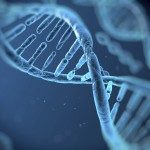Link to Pubmed [PMID] – 19471269
Nat. Neurosci. 2009 Jun;12(6):703-10
The identification of mutations underlying monogenic, early-onset forms of deafness in humans has provided unprecedented insight into the molecular mechanisms of hearing in the peripheral auditory system. The molecules involved in the development and function of the cochlea eluded characterization until recently owing to the scarcity of the principal cell types present. The genetic approach has circumvented this problem and succeeded in identifying proteins and deciphering some of the molecular complexes that operate in these cells. In combination with mouse models, the genetic approach is now revealing some of the principles underlying the development and physiology of the cochlea. Focusing on the hair bundle, the mechanosensory device of the sensory hair cell, we highlight recent advances in understanding the way in which the hair bundle is formed, how it operates as a mechanotransducer and how it processes sound. In particular, we discuss how these findings confer a central role on the various hair-bundle links in these processes.

